#Yves Brayer
Text

Snow at Méjean , Les Baux - Yves Brayer , 1981.
French, 1907-1990
Oil on canvas , 50 x 65 cm.
276 notes
·
View notes
Text

Yves Brayer - Le Port d'Hydra (1975)
163 notes
·
View notes
Text
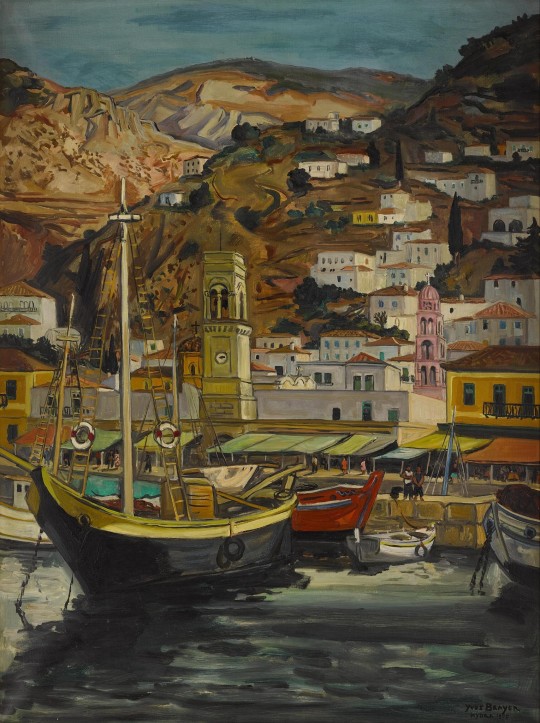
"Le Port d'Hydra". 1975.
By Yves Brayer. French. 1907-1990.
> random-brushstrokes
0 notes
Text
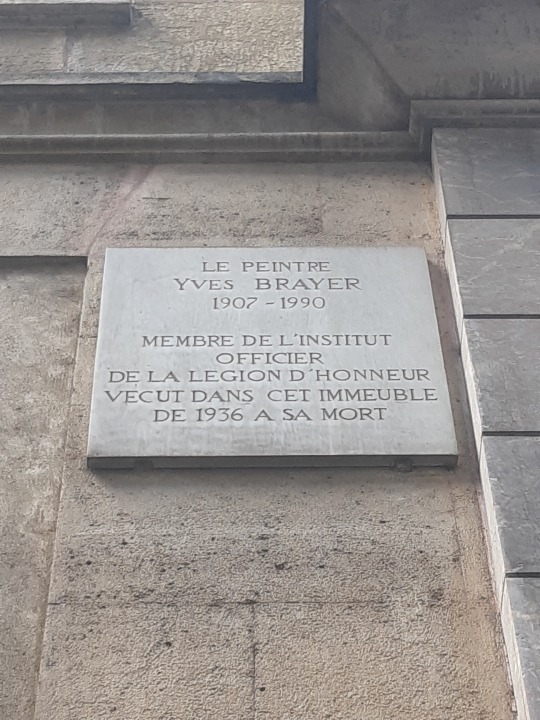

Plaque en hommage à : Yves Brayer
Type : Lieu de résidence
Adresse : 22 rue Monsieur le Prince, 75006 Paris, France
Date de pose :
Texte : Le peintre Yves Brayer, 1907-1990, membre de l'Institut, officier de la Légion d'honneur, vécut dans cet immeuble de 1936 à sa mort
Quelques précisions : Yves Brayer (1907-1990) est un peintre français. Tourné vers une carrière artistique à la suite d'une blessure qui le détourne de la voie militaire, son œuvre est très tôt récompensée, notamment par le grand prix de Rome en 1930.Il peint de nombreuses vue de Paris, où il réside durant l'Occupation, ainsi que d'autres scènes et tableaux, notamment dans le cadre d'une commande de l'Opéra de Paris. Séduit par les paysages de Provence, il les incorpore progressivement à son art. Il reçoit en 1954 le Grand Prix des Beaux-Arts de Paris et est élu membre de l'Académie des beaux-arts en 1957. Il est également connu pour avoir collectionné une grande quantité de divers chapeaux et couvre-chefs. Un musée de Provence porte aujourd'hui son nom. Cette plaque commémorative est située à côté d'une autre honorant un autre peintre, Antonio de La Gandara, qui mourut dans le même immeuble une vingtaine d'années avant que Brayer ne s'y installe.
0 notes
Text
Metal Dedektörü Penis Biçiminde Bir Kolye Buldu
Metal Dedektörü Penis Biçiminde Bir Kolye Buldu
Metal Dedektörü Penis Biçiminde Bir Kolye Buldu
Yakın zamanda bir metal dedektörü, İngiltere’nin Kent kentinde, yaklaşık 1800 yıl önce kişiyi talihsizlikten/kötülükten korumak için boyuna takılan gümüş, penis şeklinde bir kolye buldu.
Metal Dedektörü Penis Biçiminde Bir Kolye Buldu
Marcus Terentius Varro (MÖ 116 – MÖ 27) ve Yaşlı Pliny (MS 23 – 79) gibi antik Roma yazarları, fallusun (penis) ve…

View On WordPress
#ankeoloji#bakır kolye#fallus#gümüş kolye#kazı#Marcus Terentius Varro#Metal Dedektörü Penis Biçiminde Bir Kolye Buldu#Musée Yves Brayer#roma dönemi#Yaşlı Pliny
0 notes
Text

.
Hayal gücü asla evde oturmaz.
( Yves Brayer )
.
.
.
.
.
[ Ankara, Çankaya, ODTÜ Bilim ve Teknoloji Müzesi, 24.02.2023 ]
13 notes
·
View notes
Photo

Yves Brayer (1907-1990) French
Brayer was a French painter known for his paintings of everyday life. He was born in Versailles. He studied in Paris at the academies in Montparnasse starting in 1924, and then at the École des Beaux-Arts with Lucien Joseph Simon (1861 – 1945)
46 notes
·
View notes
Photo
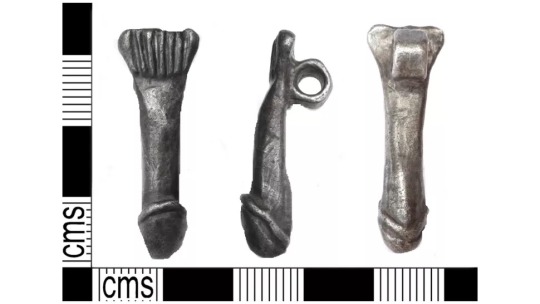


Very Rare Roman Penis Pendant Discovered in UK
A metal detectorist recently discovered a silver, penis-shaped pendant in Kent, England that was likely worn around the neck to protect a person from misfortune around 1,800 years ago.
Ancient Roman writers such as Marcus Terentius Varro (lived 116 B.C. to 27 B.C.) and Pliny the Elder (A.D. 23 to 79) mention how the phallus and representations of it are thought to have had the power to protect a person from evil. Many depictions of the phallus have been found throughout the Roman Empire and scholars often believe that they were created to avoid bad luck.
The pendant (also called an amulet) is about 1.2 inches (3.1 centimeters) long, with a tiny ring at the top for a string (necklace) to go through. It dates back to a time when the Romans controlled England, between A.D. 42 and 410.
While such amulets in the shape of a penis were frequently seen throughout Roman Britain, they are typically made of copper-alloy rather than silver like the one from Kent, Lori Rogerson, a finds liaison officer with the Portable Antiquities Scheme (PAS), wrote in a report (opens in new tab) on the artifact.
"Being a higher-quality metal than copper-alloy, silver may have been thought to strengthen the phallus' protective abilities," Rogerson told Live Science in an email. "We know that children were protected by these apotropaic [having the power to stop evil] devices, and the archaeological evidence suggests their use in Britain was very popular within the Roman army."
Roman men, women, children and even animals wore pendants like this, in an effort to ward off the so-called evil eye, said Cyril Dumas, a scholar at Musée Yves Brayer who has researched and written about these artifacts. "This amulet is against the effects of 'the evil eye,' a personification of bad luck," Dumas told Live Science in an email.
As for the choice of metal, perhaps the person who commissioned or bought the piece of jewelry had enough money for a higher-quality metal. "The choice of silver as a material can be for many reasons, one of which is simply because the wearer could afford it and the pendant then also becomes an object of display," Rob Collins a project manager and research coordinator at Newcastle University's School of History, Classics and Archaeology, told Live Science in an email. "However, I suspect that silver also has magical properties or affiliations associated with it as a material," added Collins, who has studied and written about artifacts like this one.
Metal detectorist Wendy Thompson found the amulet on Dec. 31, 2020, and she reported her find to the Portable Antiquities Scheme, a program run by the British Museum and National Museum Wales that tracks finds made by metal detectorists. The artifact is now going through the treasure process required by U.K. law, which may result in it entering a museum collection in Britain.
By Owen Jarus.
#Very Rare Roman Penis Pendant Discovered in UK#metal detector#archeology#archeolgst#ancient pendant#ancient amulet#ancient artifacts#history#history news#ancient history#ancient culture#ancient civilizations#roman empire#roman history#roman artifacts#silver#treasure
47 notes
·
View notes
Text

Place in Arles under the snow - Yves Brayer , 1963.
French, 1907-1990
Oil on canvas , 65 x 81 cm.
174 notes
·
View notes
Photo


Yves Brayer with a model, in his workshop, circa 1938
73 notes
·
View notes
Text

Yves Brayer - Oliviers A Mejean, Les Baux-De-Provencey
86 notes
·
View notes
Text

Yves Brayer
#Yves Brayer#cannes#art#art history#history#rome#roma#eurovision italy#chiesa#classic#vintage#poster
30 notes
·
View notes
Text
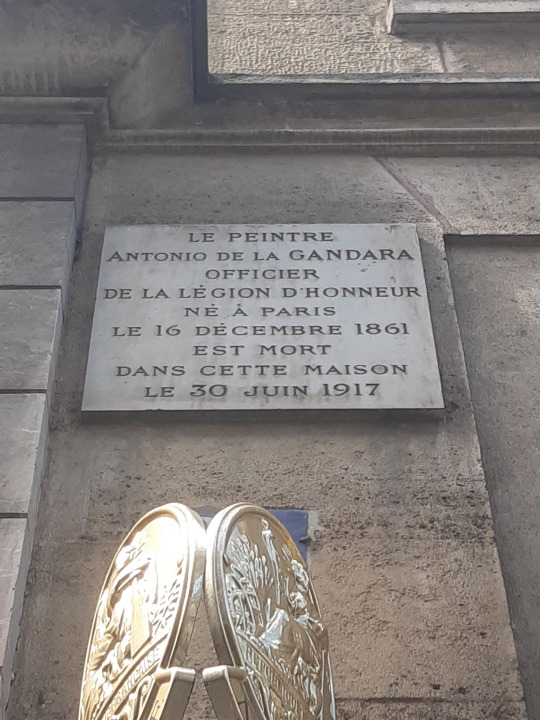

Plaque en hommage à : Antonio de La Gandara
Type : Lieu de décès
Adresse : 22 rue Monsieur le Prince, 75006 Paris, France
Date de pose :
Texte : Le peintre Antonio de La Gandara, officier de la Légion d'honneur, né à Paris le 16 décembre 1861, est mort dans cette maison le 30 juin 1917
Quelques précisions : Antonio de La Gandara (1861-1917) est un peintre français, surnommé le "peintre-gentilhomme". Influencé par les cultures française, mexicaine et anglaise, il réalise plusieurs portraits de personnalités issues de la noblesse, ce qui lui permet d'acquérir une certaine notoriété dans le milieu artistique. Il accède à la gloire internationale au début des années 1900. Durant la Première Guerre mondiale, il s'attache à soutenir les familles des hommes partis au front. Il meurt d'un infarctus. Cette plaque commémorative est située à côté d'une autre honorant un autre peintre, Yves Brayer, qui vécut dans le même immeuble une vingtaine d'années après la mort de La Gandara.
0 notes
Photo
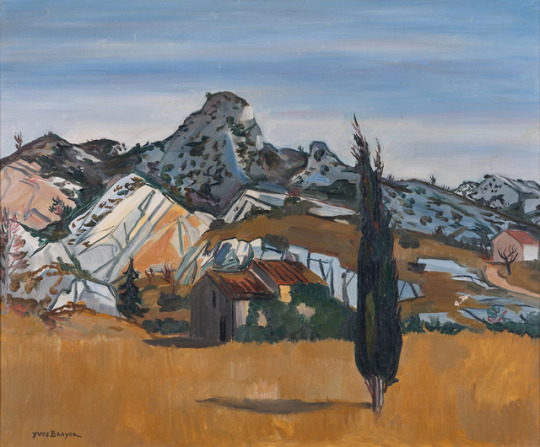
Yves Brayer (French, 1907-1990), Les Alpilles, 1956. Oil on canvas, 54 x 65 cm.
97 notes
·
View notes

